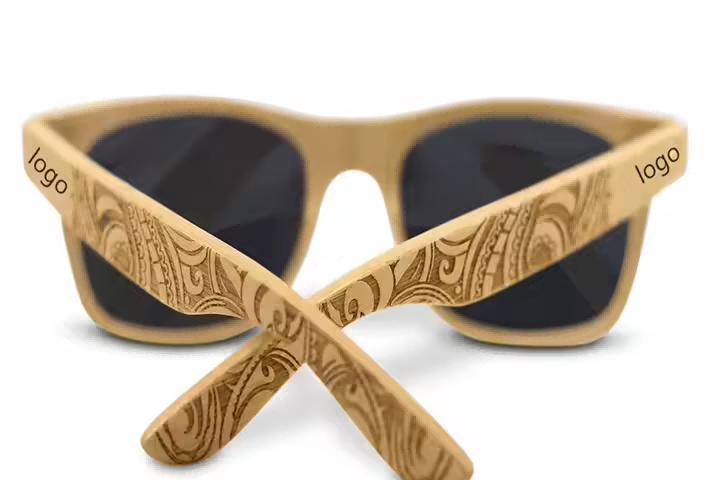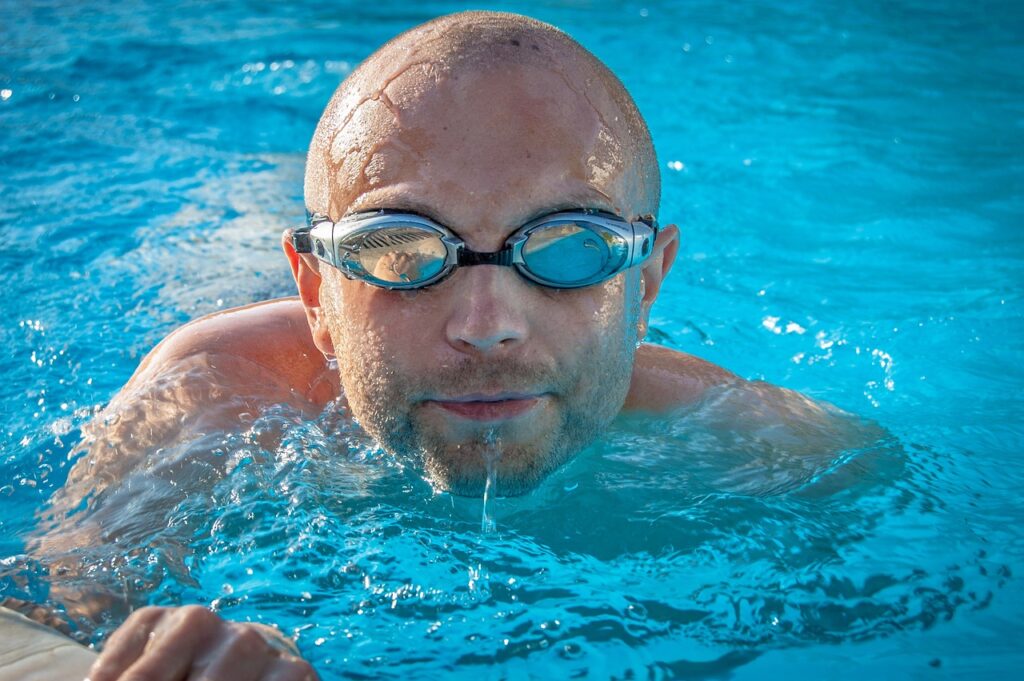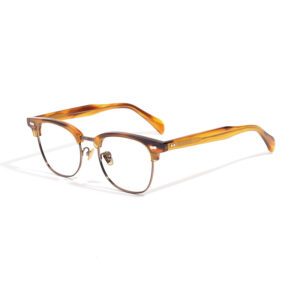When customizing a logo on eyewear, brands often face a critical question: how can they ensure that their logo appears perfectly on different materials? The material of the eyewear has a direct impact on how well a logo is displayed. Choosing the right technique not only enhances brand image but also ensures the logo’s durability and visual impact.
This article will provide a detailed analysis of how to select the appropriate logo printing or engraving techniques based on different materials, ensuring a perfect blend between the logo and the eyewear.
Key Considerations for Logo Techniques
Selecting a suitable logo technique involves more than just aesthetics. The material, logo complexity, and brand image play a pivotal role in determining the best approach. Whether the goal is to enhance luxury or embrace modern styles, brands need to carefully consider how to balance the logo’s visibility, durability, and aesthetic compatibility with the eyewear material.
Metal Materials
Material Overview:
Metals such as stainless steel, titanium, and aluminum are commonly used in high-end eyewear, especially for premium sunglasses. These materials are known for their strong, durable nature and are often chosen for their sleek and modern appeal. Therefore, the logo application method should match these characteristics, offering both precision and long-lasting resilience.
Recommended Techniques:
- Laser Engraving
Applicability: Laser engraving is ideal for metal surfaces, as it can achieve high precision without the need for additional materials.
Effect: The engraved logo is highly durable and resistant to wear. Laser engraving can achieve intricate details and depth, making it perfect for displaying fine lines and detailed designs.

- Electroplated Logo
Applicability: Electroplating is a process that adds a metallic finish to the logo, perfect for high-end brands looking for a visually striking effect.
Effect: The electroplated logo shines with a metallic luster, making the eyewear look high-class. This technique is ideal for brands seeking to integrate their logo seamlessly with the frame’s metallic sheen.

- Embossing
Applicability: Embossing uses high pressure to press the logo into the metal surface, creating a raised or indented effect.
Effect: The embossed logo provides a subtle 3D look, perfect for minimalist designs. The logo remains intact over time, maintaining its high-end appeal without losing durability.

Plastic Materials (TR90, PC, Acetate, etc.)
Material Overview:
Plastic frames are popular for their lightweight properties and versatile color options. The flexibility of these materials calls for logo techniques that ensure the logo remains vibrant and secure without compromising the integrity of the frame.
Recommended Techniques:
- Screen Printing
Applicability: Screen printing works especially well on plastic surfaces, particularly when logos have multiple colors or complex designs.
Effect: The printed logo maintains bright, vivid colors over time. This technique is excellent for brands that want to catch the consumer’s eye through bold, colorful logo designs.

- Pad Printing
Applicability: Pad printing is perfect for curved or uneven surfaces, such as temple arms. This technique can transfer logos onto irregular shapes with high precision.
Effect: Pad printing ensures that even intricate logos are accurately reproduced, making it suitable for smaller logos or those placed on curved sections of eyewear.

- UV Printing
Applicability: UV printing allows for high-definition printing on plastic surfaces, including complex and multi-colored logos.
Effect: UV-printed logos have a sharp, clear resolution and are highly resistant to fading. This is a popular choice for brands that want to convey modernity and technical sophistication.

Acetate and Natural Fiber Sheets
Material Overview:
Acetate and natural fiber sheets are used in premium eyewear frames, offering a sturdy and customizable base. The material’s natural texture and color options are popular with bespoke brands, making it essential to choose a technique that complements the frame’s look.
Recommended Techniques:
- Heat Transfer Printing
Applicability: Heat transfer printing is excellent for large logos and designs with vibrant colors, transferring complex images seamlessly onto the surface.
Effect: The colors are bright and long-lasting, making this technique ideal for fashion-forward and customizable eyewear brands.

- Laser Engraving
Applicability: Laser engraving works well on acetate, providing a refined, natural logo without altering the frame’s original texture.
Effect: The engraved logo blends with the material, creating a subtle yet lasting brand mark that appeals to brands focused on detail and high-end image. - Hot Stamping (Gold or Silver Foil)
Applicability: Hot stamping applies a metallic foil to the surface of the frame, perfect for logos that aim to exude luxury and exclusivity.
Effect: The metallic sheen adds an elegant and eye-catching finish, ideal for brands in the high-fashion or luxury eyewear segment.

Wood and Bamboo
Material Overview:
Wood and bamboo are increasingly popular for eco-friendly and handmade eyewear. These natural materials have unique textures, and the logo technique must preserve their organic beauty while providing a strong brand presence.
Recommended Techniques:
- Laser Engraving
Applicability: Laser engraving is a top choice for wood and bamboo materials, as it can create a precise logo without damaging the natural surface.
Effect: The logo blends seamlessly with the material’s natural texture, enhancing the eco-friendly and artisanal appeal of the eyewear.

- Embossing
Applicability: Embossing offers a subtle logo imprint on wood or bamboo, maintaining the natural feel while providing a discreet yet elegant brand mark.
Effect: The embossed logo is understated and stylish, making it perfect for brands that value simplicity and craftsmanship.
Lenses (Glass or Polycarbonate)
Material Overview:
Lenses are a critical part of the eyewear, and logos are often displayed here for increased brand recognition. However, the logo application must ensure that it does not interfere with the wearer’s vision or the clarity of the lenses.
Recommended Techniques:
- Laser Engraving
Applicability: Laser engraving can be used on lenses to create a logo that is subtle yet clear, often seen on sunglasses.
Effect: The engraved logo remains visible without affecting visibility, offering a low-profile way for brands to leave their mark.

- UV Printing
Applicability: UV printing allows for the creation of high-definition logos directly on the lens, ideal for sunglasses.
Effect: The printed logo is clear, colorful, and long-lasting, adding a vibrant touch to the lens without compromising visual quality.

Mixed Materials
Material Overview:
Many eyewear designs combine materials like metal and plastic. For such frames, the logo technique must account for both materials to ensure a uniform and consistent brand presence.
Recommended Techniques:
- Multi-Technique Combination
Applicability: Different techniques can be used for different materials within the same frame. For example, laser engraving on metal and screen printing on plastic.
Effect: By using a combination of techniques, the logo maintains consistency across various materials, ensuring the overall look remains cohesive and professional.
Conclusion
Choosing the right logo technique for your eyewear depends on several factors: the material, the complexity of the design, and the desired brand image. For high-end brands, methods such as laser engraving, embossing, or electroplating can highlight sophistication and precision. On the other hand, screen printing, UV printing, and pad printing are better suited for vibrant and modern designs. Ultimately, ensuring the perfect blend between the logo and the eyewear material is key to maintaining durability and visual appeal.
Get Your Quote Now!
Curious about the cost of custom logo branding for eyewear?
Our competitive pricing ensures you get high-quality logo customization to enhance your brand’s visibility!
























